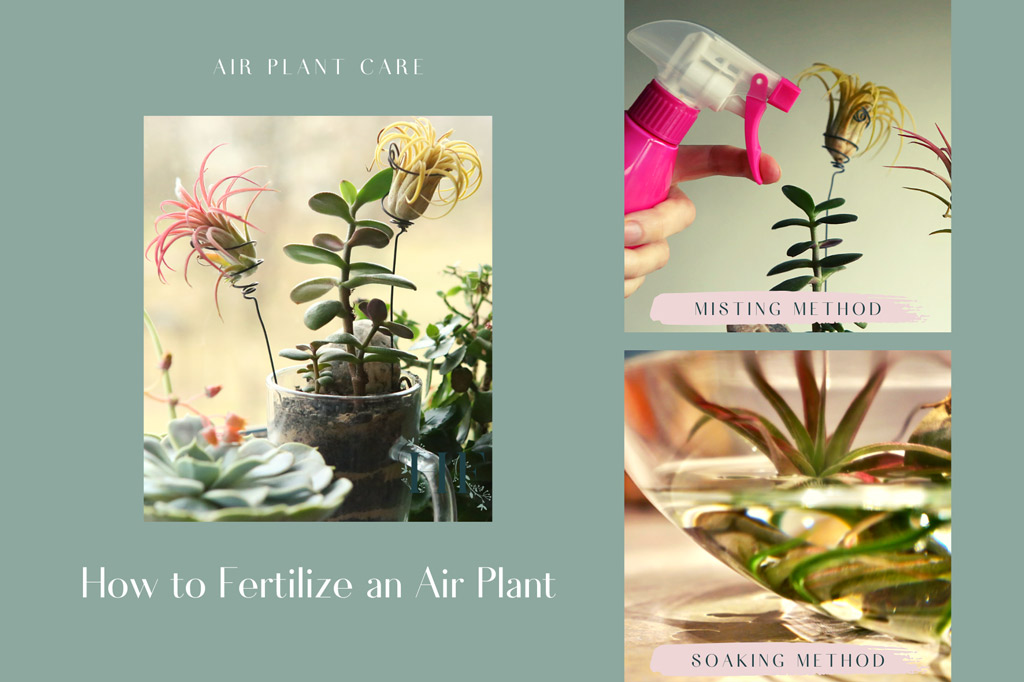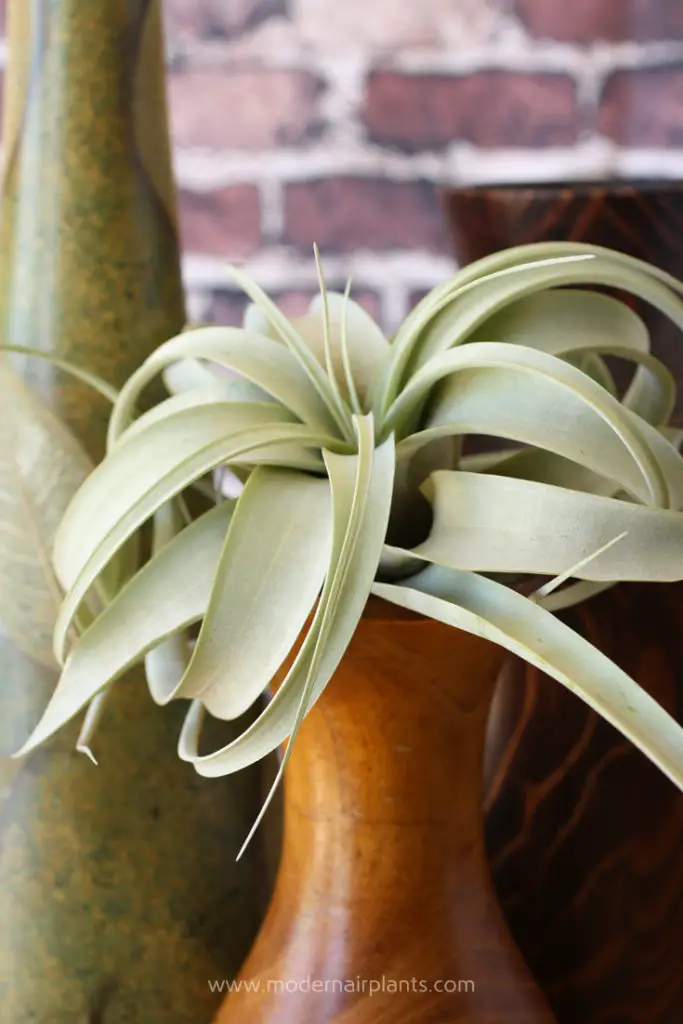Unlocking the Secrets of Epiphytes
Air plants, also known as tillandsia, are epiphytes that have adapted to thrive in environments with limited water and nutrient availability. These unique plants have evolved to absorb moisture and nutrients through their leaves, rather than roots, making them an intriguing addition to any indoor space. One of the primary benefits of learning how to grow an air plant is their low maintenance requirements, allowing even the most novice plant owners to succeed. Additionally, air plants offer versatility in decoration, as they can be displayed in a variety of creative ways, from glass containers to driftwood mounts. By understanding the unique characteristics of air plants, you can unlock the secrets of these epiphytes and enjoy their captivating beauty in your home or office.
Choosing the Right Air Plant Species for You
With over 650 species of air plants, selecting the right one for your needs can be a daunting task. However, understanding the unique characteristics and requirements of each species can help you make an informed decision. Tillandsia, one of the most popular air plant species, is known for its vibrant colors and ability to thrive in a variety of environments. Ionantha, on the other hand, is a more delicate species that requires higher humidity and indirect light. Xerographica, with its striking silvery leaves, is a great choice for those who want a low-maintenance air plant that can tolerate some neglect. When learning how to grow an air plant, it’s essential to research the specific needs of your chosen species, including lighting, temperature, and watering requirements. By doing so, you can ensure that your air plant thrives and provides you with years of enjoyment.
How to Provide the Perfect Environment
Creating an ideal environment is crucial when learning how to grow an air plant. Air plants require specific conditions to thrive, and understanding these needs can make all the difference in their health and longevity. Lighting is one of the most critical factors, with most air plants requiring bright, indirect light. Direct sunlight can be too intense and may cause the leaves to become scorched. Temperature also plays a significant role, with air plants preferring temperatures between 50°F and 90°F (10°C and 32°C). Humidity is another essential element, with air plants thriving in environments with a relative humidity of 40-60%. To create an ideal environment, consider placing your air plant in a well-ventilated area, away from direct sunlight, and misting it regularly to maintain the desired humidity level. By providing the perfect environment, you can ensure your air plant receives the necessary conditions to grow and flourish.
Nourishing Your Air Plant: Watering and Fertilizing
When learning how to grow an air plant, understanding the importance of proper watering and fertilizing is crucial. Air plants absorb moisture and nutrients through their leaves, so it’s essential to provide them with the right amount of water and nutrients. Watering should be done 2-3 times a week, depending on the humidity and temperature of the environment. It’s best to mist the air plant with a spray bottle, making sure to soak the leaves thoroughly. Fertilizing can be done once a month, using a balanced, water-soluble fertilizer. Dilute the fertilizer to half the recommended strength to avoid burning the air plant’s leaves. Another option is to use a fertilizer specifically formulated for air plants, which can provide the necessary nutrients for optimal growth. By following these guidelines, you can ensure your air plant receives the nourishment it needs to thrive and flourish.
Pruning and Grooming for Optimal Health
Pruning and grooming are essential steps in learning how to grow an air plant. Regular pruning helps maintain the air plant’s shape, promotes healthy growth, and encourages blooming. To prune an air plant, start by removing any dead or damaged leaves using a pair of scissors or clippers. This will help prevent the spread of disease and encourage new growth. Next, trim the roots to prevent them from becoming too long and tangled. This will also help the air plant absorb moisture and nutrients more efficiently. Finally, gently shake the air plant to remove any debris or dust that may have accumulated on the leaves. By pruning and grooming your air plant regularly, you can keep it looking its best and promote optimal health. Additionally, pruning can encourage blooming, which is a natural process for air plants. By providing the right conditions and care, you can enjoy the beautiful blooms of your air plant.
Common Mistakes to Avoid When Growing Air Plants
When learning how to grow an air plant, it’s essential to be aware of common mistakes that can hinder growth and even lead to the death of the plant. One of the most critical mistakes is overwatering, which can cause the air plant to rot and decay. To avoid this, make sure to water your air plant correctly, taking into account the humidity and temperature of the environment. Underwatering is also a common mistake, as air plants need regular misting to thrive. Insufficient light is another mistake to avoid, as air plants require bright, indirect light to photosynthesize and grow. Other mistakes include using tap water, which can contain chemicals that harm the air plant, and not providing adequate air circulation, which can lead to fungal diseases. By being aware of these common mistakes, you can take steps to prevent them and create an ideal environment for your air plant to thrive. By following the right techniques and avoiding these mistakes, you can successfully learn how to grow an air plant and enjoy its unique beauty.
Propagation and Repotting: Expanding Your Air Plant Collection
Once you’ve mastered the basics of how to grow an air plant, you may want to consider propagation and repotting to expand your collection. Air plants can be propagated through seeds, pups, or division, each with its own unique benefits and challenges. Propagation through seeds is a slower process, but it allows for greater genetic diversity and can be a fun and rewarding experience. Propagation through pups, on the other hand, is a faster and more reliable method, as pups are genetically identical to the parent plant. Division is another option, where you separate the offsets from the mother plant, making sure each section has at least one leaf and one root. When repotting, choose a well-draining potting mix and a pot that is slightly larger than the previous one. Gently remove the air plant from its pot, taking care not to damage the roots, and place it in its new home. Water thoroughly after repotting to settle the soil and provide enough moisture. By learning how to propagate and repot your air plants, you can share them with friends and family, or create a stunning display of multiple plants.
Troubleshooting Common Air Plant Problems
When learning how to grow an air plant, it’s essential to be aware of common issues that may arise and know how to troubleshoot them. One of the most common problems is pest infestation, particularly by mealybugs, spider mites, and scale. To address this, inspect your air plant regularly, and if you notice any pests, treat the plant with insecticidal soap or neem oil. Another issue is root rot, which can be caused by overwatering or poor air circulation. To prevent this, ensure your air plant is receiving adequate air circulation, and avoid getting water in the crown of the plant. Nutrient deficiencies can also occur, particularly if you’re not fertilizing your air plant regularly. To resolve this, use a balanced, water-soluble fertilizer specifically formulated for air plants. Other common issues include fungal diseases, which can be caused by high humidity and poor air circulation, and leaf tip burn, which can be caused by exposure to direct sunlight. By being aware of these common problems and knowing how to troubleshoot them, you can ensure your air plant remains healthy and thriving, and continue to enjoy the unique beauty it brings to your space.






:max_bytes(150000):strip_icc()/air-root-plant-on-wood--tillandsia-ionantha-druid-511366968-ea373337d7af42009c208584dbdd0102.jpg)
